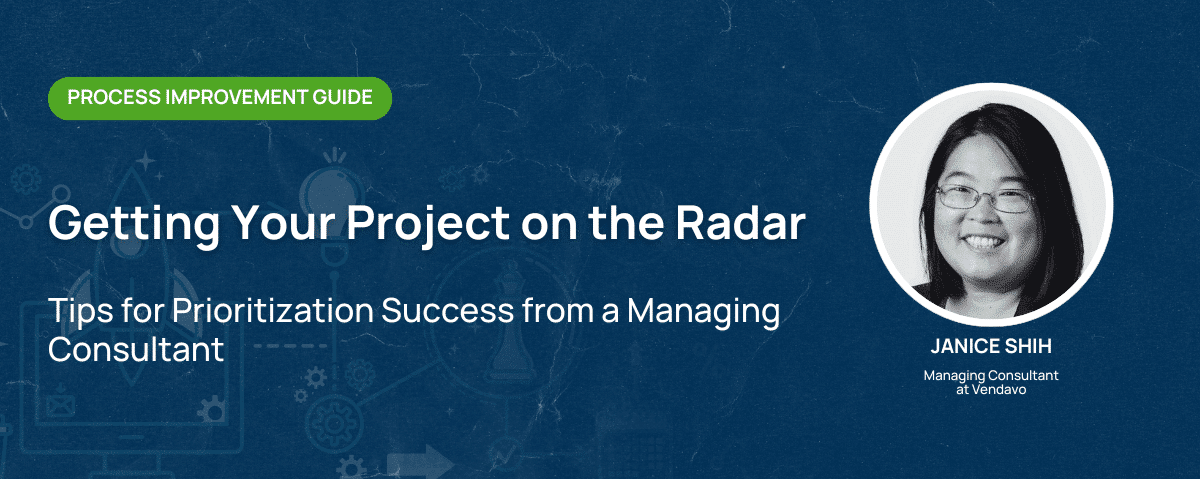
Project prioritization is high stakes in business. Every move counts. Numerous initiatives are battling for a slice of the resource pie. But clinching that top spot on the priority list is completely possible – so long as you have a strategic approach. Janice Shih, Managing Consultant at Vendavo, explains how to blend sharp strategic communication, insightful data analysis, and effective relationship-building to get your project on your organization’s radar.
Getting business project prioritization can feel like a game of chess with countless moving parts and shifting priorities. Especially because there are plenty of organizational, departmental, and project based initiatives that are constantly competing for resources.
But gaining priority is possible with the right approach. Securing a spot on the radar requires strategic communication, data-driven insights, and strong relationship-building.
Here are methods of prioritization and how to ensure your initiative gets the attention it deserves.
Key Factors to Consider in Project Prioritization
Effective project prioritization helps organizations pursue the most beneficial projects, manage resources wisely, and maintain strategic focus. Your leadership team is on the hook for maximizing operational efficiency and strategic impact, so you need to follow suit in your proposals.
Project prioritization hinges on three crucial factors:
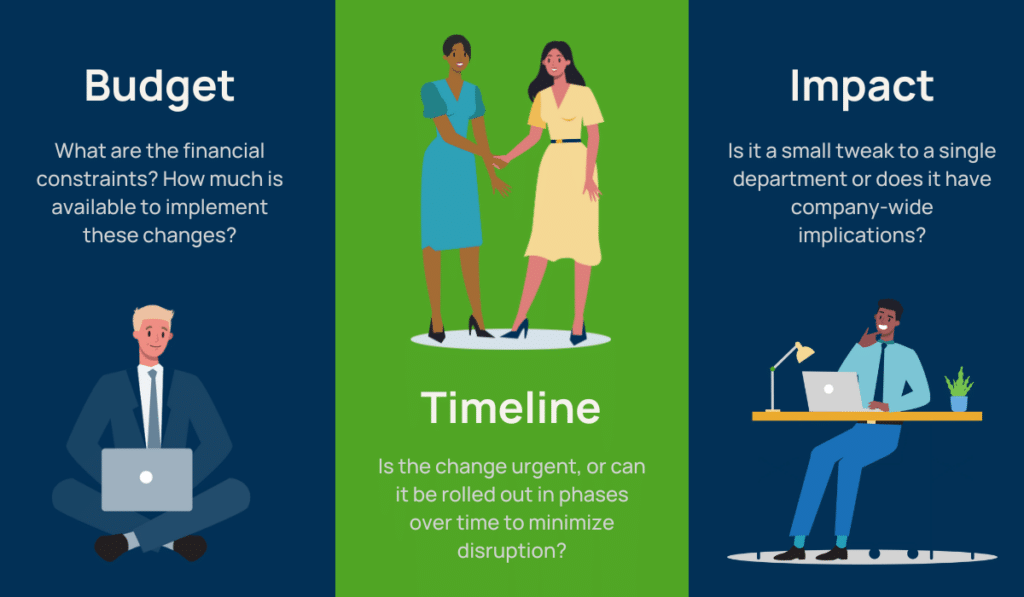
- Budget – What are the financial constraints? How much is available to implement these changes?
- Timeline – Is the change urgent, or can it be rolled out in phases over time to minimize disruption?
- Impact – Is it a small tweak to a single department or does it have company-wide implications?
There are, of course, many other elements to consider as well, including:
- Strategic alignment
- Return on investment (ROI)
- Resource availability
- Risks or challenges
- Stakeholder influence and support
- Interdependencies or interconnectedness with other projects
- Legal and compliance requirements
Consider how people’s jobs and workflows will change if your project is prioritized. A RACI could help with this. Include this information in your proposal for more sustainable and effective project outcomes, benefiting the entire organization.
Each factor plays a role in shaping decision-making around which projects are greenlit, put on hold, or need to be re-evaluated.
How to Navigate Prioritization Challenges
Different departments often have conflicting priorities. Each must present its pain points and potential solutions to decision-makers.
When presenting your project proposal, remember that navigating prioritization challenges requires a strategic approach. You must blend analytical methods with strong interpersonal skills.
The project prioritization factors above set the stage, but the following three-part strategy will put you on the path to success:
- Communicate
Explain why you’re making a change. Define clear, measurable criteria. Communicate transparently and often. Lay out the reasons for your project with leadership and colleagues. Explain why prioritization matters.
- Understand impact
Engage stakeholders early to gather diverse perspectives and organizational needs. Define the scope. Will this change affect 90% of the business or a small segment? Clarity here helps build a compelling case.
- Be aware of parallel activities
What other requests are happening at the same time? Work with other teams to ensure prioritization is aligned across departments. Consider resource allocation and be wise about what you’re requesting. Focus on larger, big-picture goals.
Be flexible and reassess regularly. Project prioritization is important, but the organization’s needs are more so. If there are ways to adapt your proposal to fit more of your organization’s strategic goals, do so!
The more you can align your requests with measurable, ongoing success, the more likely it is that you’ll gain approval.
4-Step Process to Secure Stakeholder Buy-In
Getting stakeholders and decision-makers on board is often the biggest challenge.
Here are methods to make sure you can gain stakeholder buy-in to prioritize your project:
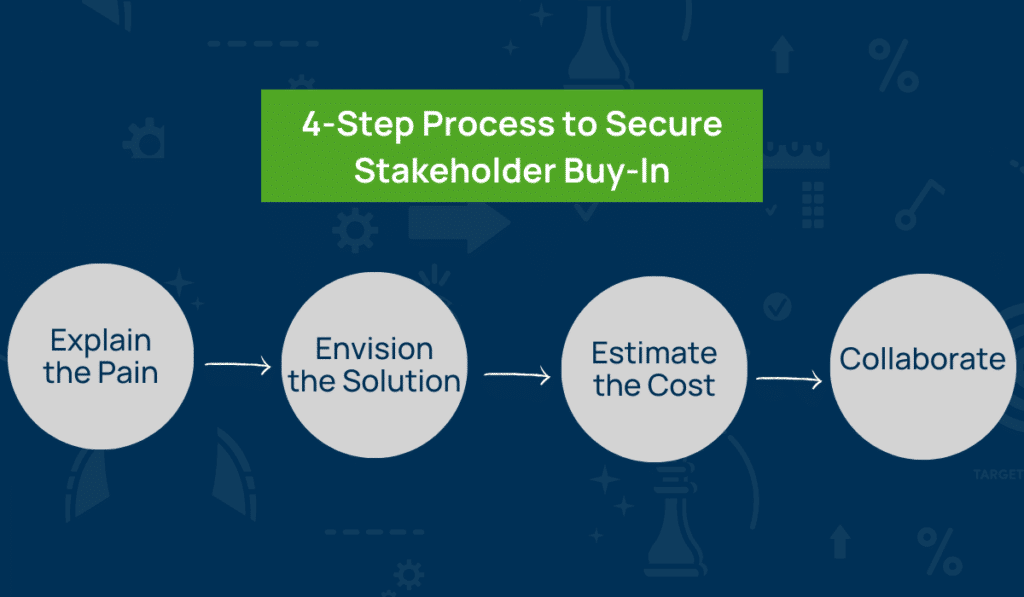
- Explain the pain
Understand the pain point. How long does the pricing process take currently? What specific challenges are being faced?
- Envision the solution
Clearly articulate the end goal. Now that you understand the pain, what do you want to accomplish? How will you do this?
- Estimate the cost
Break down the expected cost of implementing the feature or change. Stakeholders must see the financial, resource, and personnel implications.
- Collaborate with other managers
Socialize your request across departments. Work with other managers to observe the same issues and align on a solution.
This process aligns your project with strategic goals, ensures resource availability, mitigates risks, and fosters a collaborative environment for effective change management.
Data-Driven Decision Making for Project Prioritization
Data is the cornerstone of any compelling project proposal. In business, it’s not about the loudest voice. It’s always about the strongest data.
To make a solid business case for your project, consider:
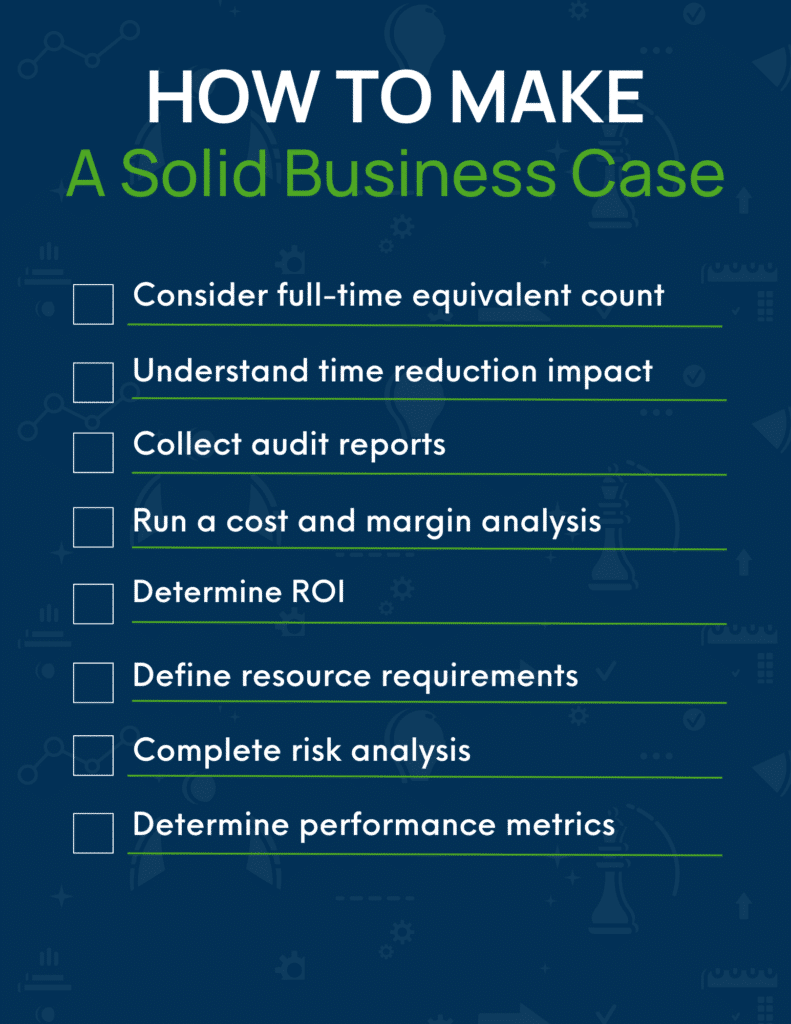
- Full-time equivalent (FTE) count – How many hours and headcount does the current process require?
- Time reduction impact – What are the estimated time reductions and their immediate revenue implications?
- Audit reports – What are the risk of penalties if audits can’t pass due to inefficient processes?
- Cost and margin analysis – What’s the real cost to implement the changes versus the opportunity cost of NOT making them?
- ROI – What can we estimate as revenue generation, cost savings, efficiency improvements, or other financial metrics that justify investment? Help decision-makers understand what money could be left on the table if you don’t do this project.
- Resource requirements – Which personnel, technology, and materials are required and how will allocation impact other projects or operational capabilities?
- Risk analysis – Which statistical data can we include on the list of potential risks? What are your mitigation strategies to manage the risks?
- Performance metrics – How will the success of the project be measured, including data on effectiveness, efficiency, cost, and alignment with strategic goals?
Adding data to help prioritize your project demonstrates thorough planning and understanding of the project’s dimensions. It also helps decision-makers assess viability, strategic fit, and potential return.
How to Adapt to Changing Organizational Needs
Organizations must remain agile, and that means ensuring project portfolios continually align with evolving strategic goals and market conditions.
You must communicate and compromise when trying to get your project prioritized. You can’t always win. Here’s how to adapt your approach to shifting organizational needs:
- Communicate with your team to see if anyone is already working on a similar solution
- Choose your battles wisely because you can’t win them all
- Make your requests count so people recognize that when you ask, it’s important
- Clarify must-haves vs. nice-to-haves and align with other managers on prioritization
- Ensure the impact is significant enough to need prioritization
- Be clear on how much you need to spend in time and money
- Phase your rollout if a feature can’t be prioritized now
- Stay focused and avoid requesting additional features once approved
- Don’t take rejection personally: it’s a business decision, not personal
Adaptability is key here. By taking these steps, you can ensure that your project proposal fits within your organization’s changing needs and streamline prioritization.
Remember: Your Goal is to Support Your Team
Project prioritization challenges happen in every company. Securing prioritization for your project is about both moving your agenda forward and elevating the entire team.
A compelling project proposal:
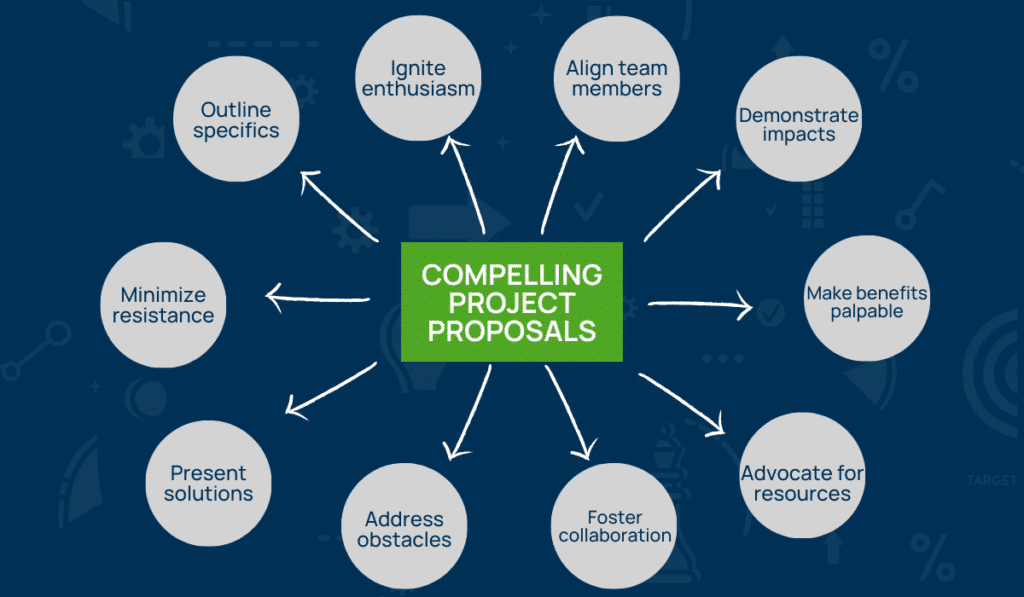
- Outlines specifics
- Ignites enthusiasm
- Aligns every team member with a shared vision
- Clearly demonstrates how the project will streamline workflows, boost efficiency, and directly contribute to the organization’s strategic goals
- Makes the benefits palpable to decision-makers and team members
- Advocates for the resources needed
- Fosters a spirit of collaboration and support across departments
- Addresses potential obstacles upfront
- Presents well-thought-out solutions
- Minimizes resistance for smooth execution
And all for the good of your team and organization.
Ready to take your organization’s growth and profitability to the next level? Reach out today to speak with a Vendavo expert about how our full suite of commercial excellence and revenue optimization solutions can help.
